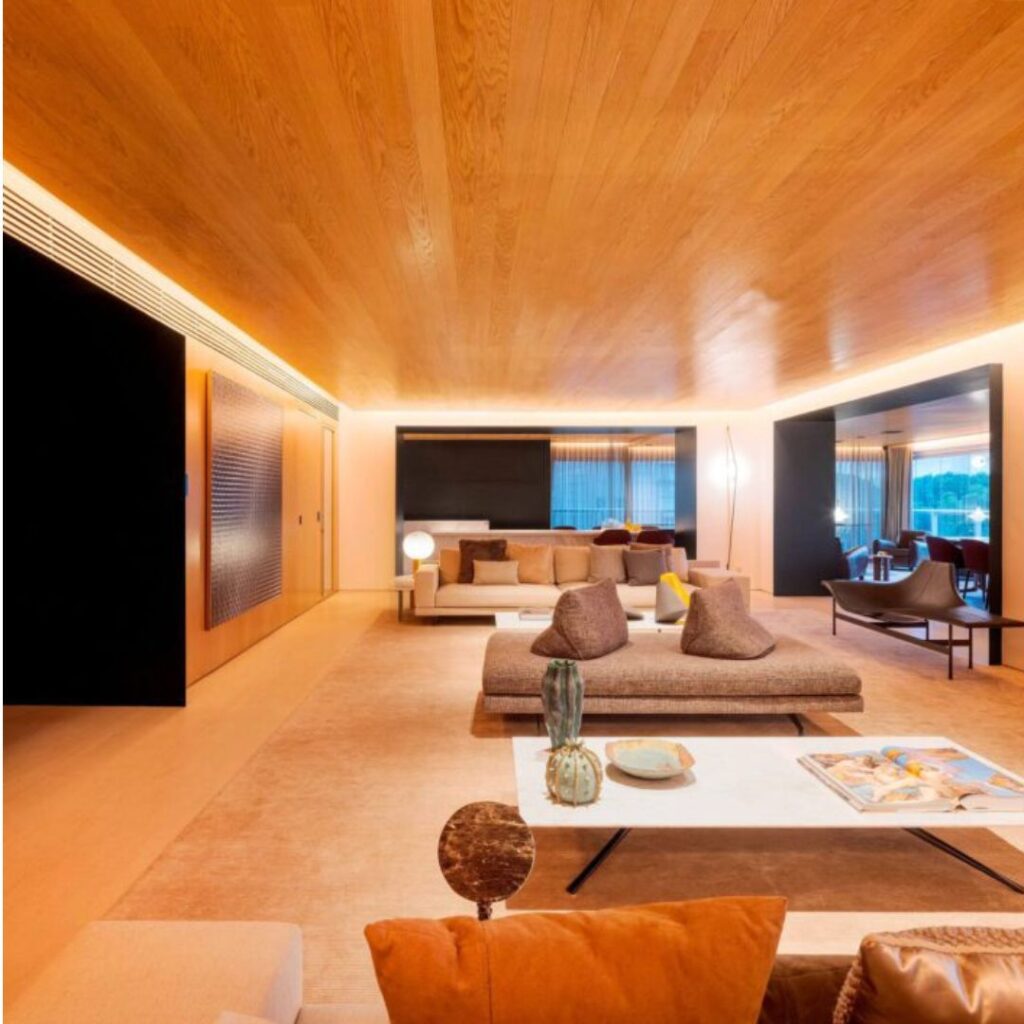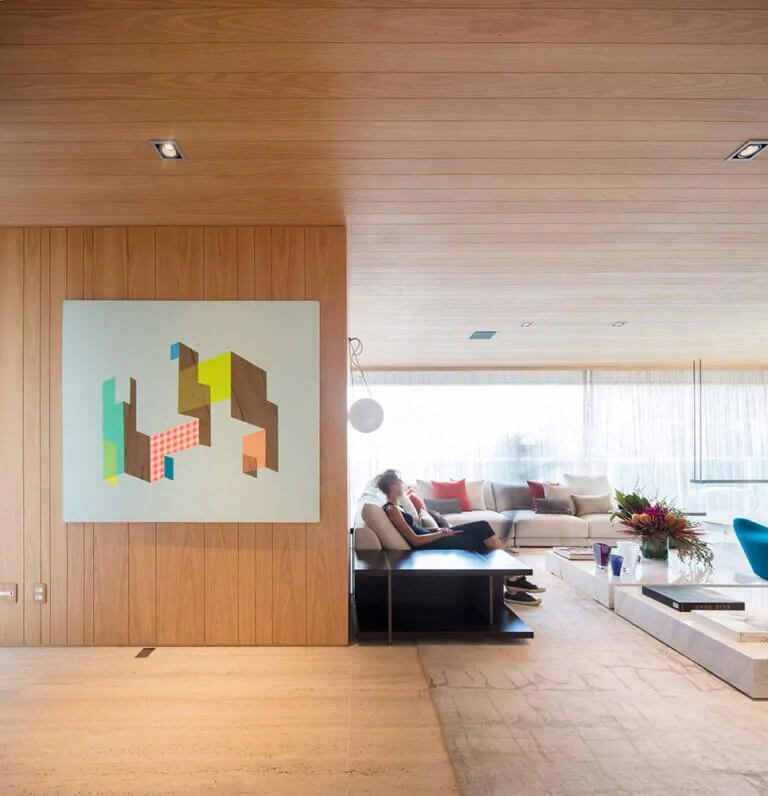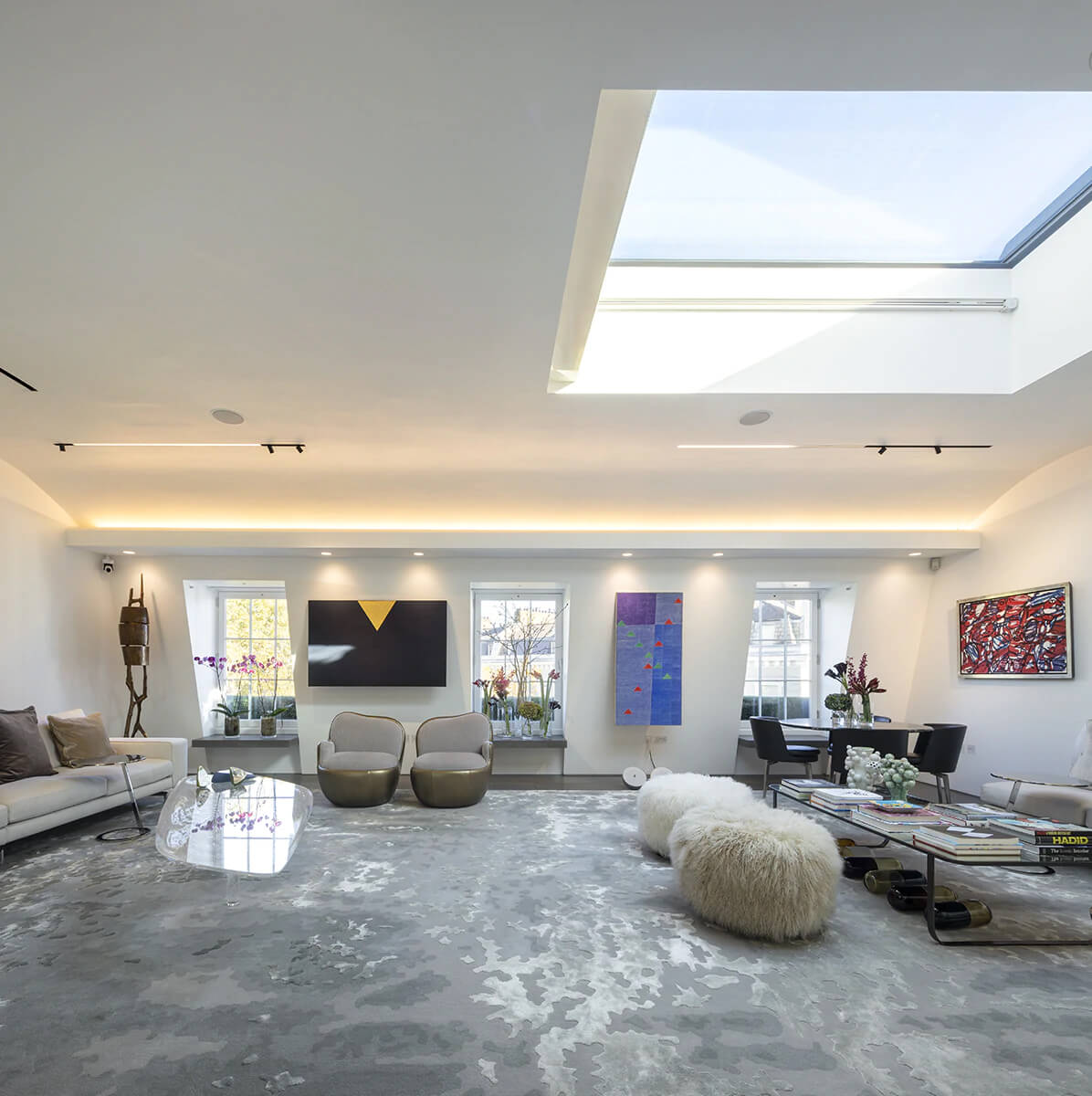When there is a harmonious integration between design and art, space is transformed into a profound aesthetic and emotional experience.
Regarded as an artistic expression that transcends the mere construction of physical spaces, architecture reveals that the environments we inhabit are extensions of who we are. When there is a harmonious integration between design and art, space is transformed into a profound aesthetic and emotional experience.
The relationship between these disciplines — each with distinct objectives yet capable of working interdependently — has the power to turn built environments into rich, multifaceted experiences. Functionality, aesthetics, and emotion intertwine to create spaces that go beyond mere practicality.
Architect Fernanda Marques, founder of the eponymous studio, highlights that this integration of elements not only shapes residential spaces but also evokes emotions and fosters deep connections with those who inhabit them.
In Fernanda’s perspective, design is not just an aesthetic addition; it is the guiding thread that links a space’s functionality to its ability to evoke sensations. “I love mixing codes, discovering poetry in everyday objects,” she says, emphasizing the importance of details in crafting a sensitive narrative in each project.
In her CARBONO project, for example, the use of wood on the ceiling of an eighth-floor apartment in São Paulo—overlooking Ibirapuera Park—transforms the urban setting into a natural retreat. This choice was not purely aesthetic but a response to the emotional need of the clients to feel as if they were living in a countryside home, even in the heart of the city. On the central wall, an intense blue painting by Ana Jobim enhances the linearity of the space, while in the dining room, a minimalist chandelier by Cypriot designer Michael Anastassiades completes the composition.




